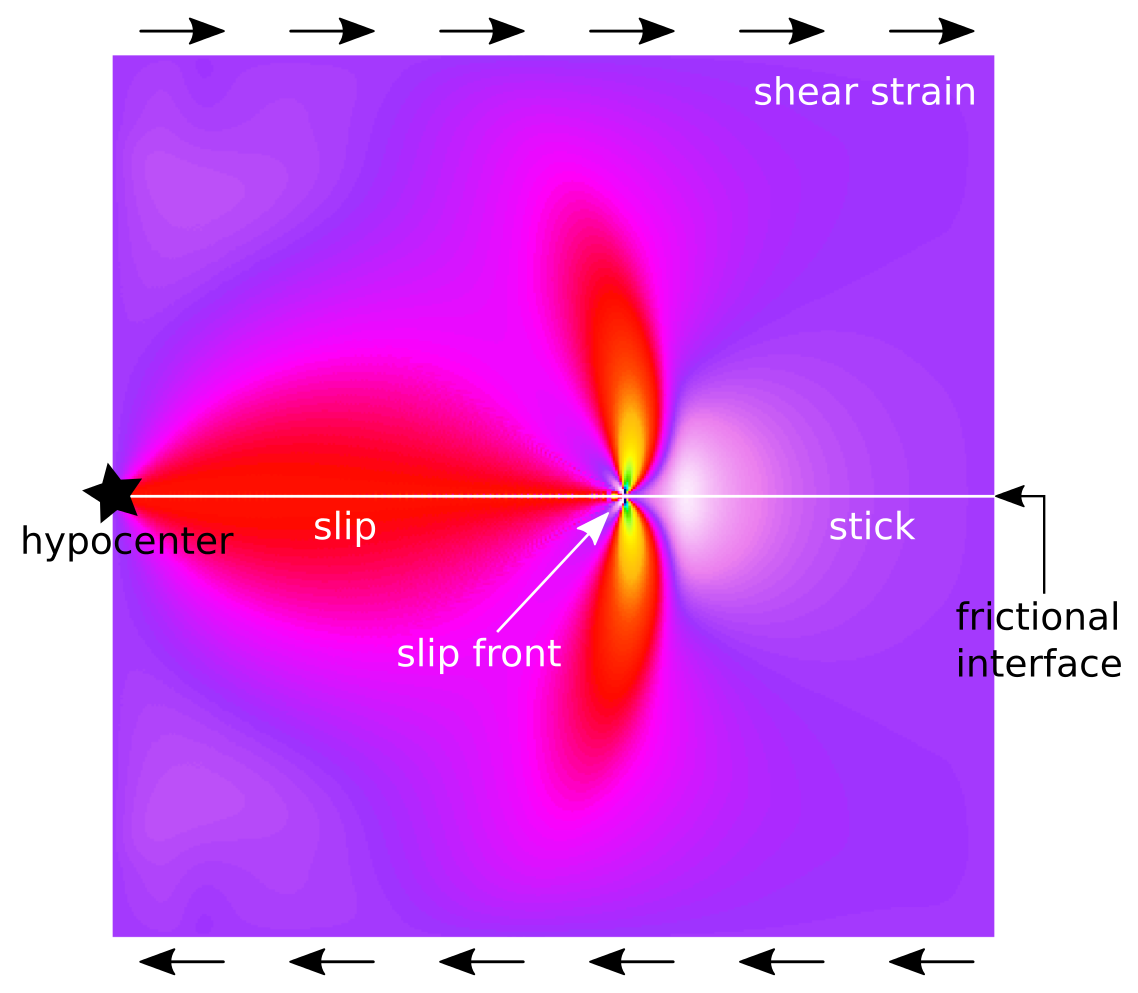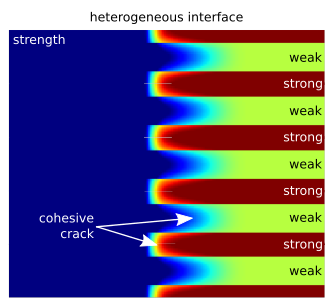Kammer Research Group
Computational Solid Mechanics
Frictional Sliding
The onset of frictional sliding occurs through the propagation of local slip fronts that behave similar to shear cracks. Whether an interface will slide or stick depends largely on these slip events. The conditions under which they nucleate and how far they propagate are key characteristics to the understanding of this transient phenomena. The experimental observation of interface mechanics is highly challenging because of its hidden position behind the bulk of the contacting solids. In our research, we overcome this obstacle through the development of high-resolution numerical simulations, which allow us to link the mechanics of the interface with measurements recorded at the boundary of the experiments. This approach has resulted in predictive theoretical models for the arrest of slip fronts, which is particularly relevant for the determination of potential earthquake magnitudes, and the characterization of shear waves around frictional slip fronts, which are one of the main causes for the transition to super-shear propagation speeds. Current topics of interest include the determination of criticality for nucleation of slip instabilities and the propagation properties during these early stages of shear cracks.

Failure of Heterogeneous Systems
Most materials and mechanical systems applied in engineering or occurring in nature are heterogeneous at one or multiple length scales. Even though these inhomogeneities play a crucial role in the overall response of the macroscopic system they are often neglected for simplicity. On one hand, engineering approaches such as homogenization have been shown to be very useful for the determination of the macroscopic elastic response of heterogeneous materials. One the other hand, the effects of local inhomogeneities on dynamic failure mechanisms are complex and need to be considered explicitly to obtain a correct understanding of the large-scale response. In our research, we study the influence of local variation of interface and/or material properties on dynamic failure. We use numerical modeling and high-performance computing to simulate the mechanics of these complex failure mechanisms and to gain new insights on the underlying physics. Our research has shown that a length-scale interaction between interface defects and cohesive shear cracks is determining the regime of propagation. Interfaces with the same averaged strength can dynamically break with either subRayleigh or supershear speed depending on this characteristic length scale. In our current research, we study the effects of off-fault bulk heterogeneities on the dynamic propagation of shear cracks.